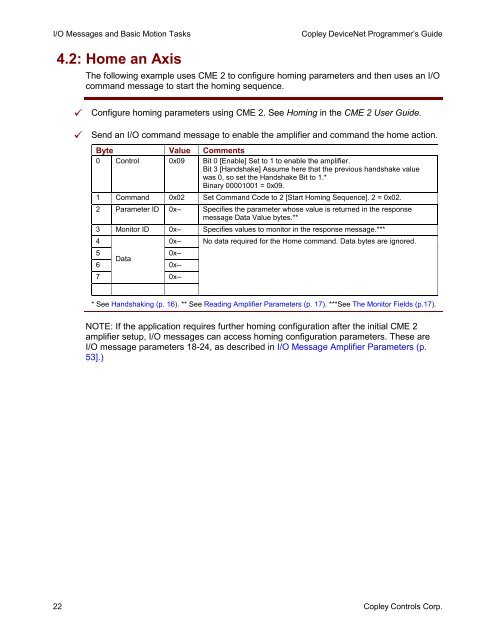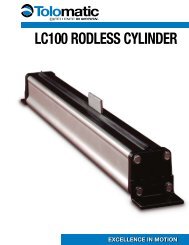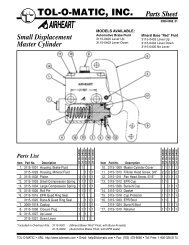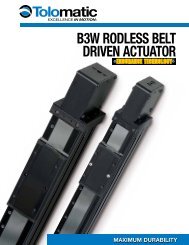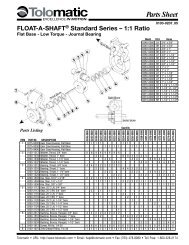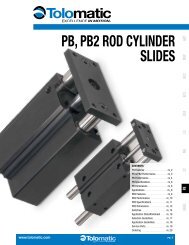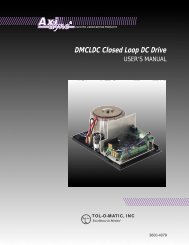DeviceNet Programmers Guide - Copley Controls
DeviceNet Programmers Guide - Copley Controls
DeviceNet Programmers Guide - Copley Controls
- No tags were found...
You also want an ePaper? Increase the reach of your titles
YUMPU automatically turns print PDFs into web optimized ePapers that Google loves.
I/O Messages and Basic Motion Tasks<strong>Copley</strong> <strong>DeviceNet</strong> Programmer’s <strong>Guide</strong>4.2: Home an AxisThe following example uses CME 2 to configure homing parameters and then uses an I/Ocommand message to start the homing sequence.Configure homing parameters using CME 2. See Homing in the CME 2 User <strong>Guide</strong>.Send an I/O command message to enable the amplifier and command the home action.Byte Value Comments0 Control 0x09 Bit 0 [Enable] Set to 1 to enable the amplifier.Bit 3 [Handshake] Assume here that the previous handshake valuewas 0, so set the Handshake Bit to 1.*Binary 00001001 = 0x09.1 Command 0x02 Set Command Code to 2 [Start Homing Sequence]. 2 = 0x02.2 Parameter ID 0x-- Specifies the parameter whose value is returned in the responsemessage Data Value bytes.**3 Monitor ID 0x-- Specifies values to monitor in the response message.***4 0x-- No data required for the Home command. Data bytes are ignored.5 0x--Data6 0x--70x--* See Handshaking (p. 16). ** See Reading Amplifier Parameters (p. 17). ***See The Monitor Fields (p.17).NOTE: If the application requires further homing configuration after the initial CME 2amplifier setup, I/O messages can access homing configuration parameters. These areI/O message parameters 18-24, as described in I/O Message Amplifier Parameters (p.53].)22 <strong>Copley</strong> <strong>Controls</strong> Corp.


